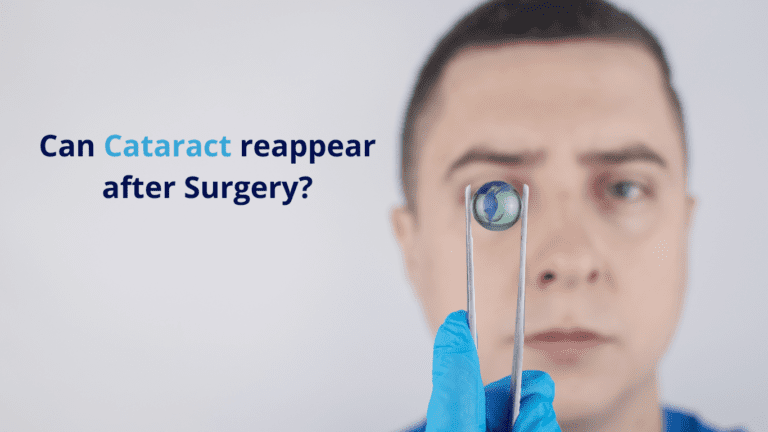Before knowing the answer of the question we have to know “What exactly is a Cataract?” So let us know about it.
What is a Cataract?
A Cataract is understood as a clouding of the eye lens which is naturally clear. Seeing through the cloudy eyes for the people who are having cataract is somewhat as the person is seeing through a frosty or misted window. At the initial stage, the person can deal with the cataract by the help of stronger lightening and eyeglasses. But the person might require cataract surgery if the distorted vision causes issues with the usual activities of the person. Luckily, Cataract Surgery is normally a secure and effective method.
Is there any chance to develop Cataract again after the Surgery?
There is no means to develop the cataract again after the cataract surgery because during the surgery of cataract natural lens is fully removed leaving a permanent effect on the eye. There is another condition known as “Posterior Capsular Opacification (PCO)” or “Secondary Cataract” or “After cataract”which is the most common complications of the cataract surgery found in 3-50% of the patients who had gone through the Cataract Surgery may arise due to the shifting and generation of the epithelial cells that would lead to reduce in visual accuracy.
In the Cataract Surgery, Extracting the Opacified Crystalline lens is involved which leaves the capsule empty which contains it and replacing the natural lens with an intraocular lens. The capsule of that crystalline lens is the fine transparent membrane covering it. The cataract procedure needs to make an opening in the anteriorpart of the capsule which would leave posterior part of the capsule intact for the implantation of the lens.
Prevention from the secondary Cataract:
A variety of more advanced intraocular lenses, the advancement of the surgical techniques and full scale polishing of epithelial capsule cells at the time of cataract surgery help to prevent or delay these secondary cataract.
Cure for the Secondary Cataract:
The vision lost due to the secondary cataract can be restored by using a YAG laser creating an opening or window in the centre of the posterior capsule (capsulotomy).
The YAG laser capsulotomy is an easy and pain free method for the patient. This method is completed in a few minutes after enlarging the pupil by using anaesthetic drops. This procedure can help patient return home at once with an eye drop treatment.
If there wouldn’t be any further eye issues related to retina, optic nerve or cornea then Visual Recovery is rapid and complete which are being seen in just a few hours. A check – up would be performed at best eye hospital in Gwalior after some days to monitor the progress and an assessment to examine the requirement for glasses whether they need it or not. A capsulotomy in any case will advance vision insofar as possible.
Some patients affirm that they are able to see “floaters” in the subsequent days in spite of being a very safeprocedure and it could be possible due to small residual fragments of the capsule which are generally resorbed and vanished in a few days. Although this impact may continue for a more extended period in isolated cases.
It is an ultimate cure in a single session. Although the opacity reoccurs in very unusual cases creating the necessity to repeat the process. According to the best eye specialist in Gwalior, the alternative for YAG laser capsulotomy is not to do anything.

About DR. PURENDRA BHASIN
MS, MAMS, Fellowship at Aravind Eye Hospital in Anterior Segment Microsurgery and Intra-ocular lens implantation.
Fellowship in ILADEVI CATARACT & IOL INSTITUTE under Dr. Abhay R. Vasavada, Ahmadabad.
Started Ratan Jyoti Netralaya in Gwalior on 21st April 1996.

















0 Comments